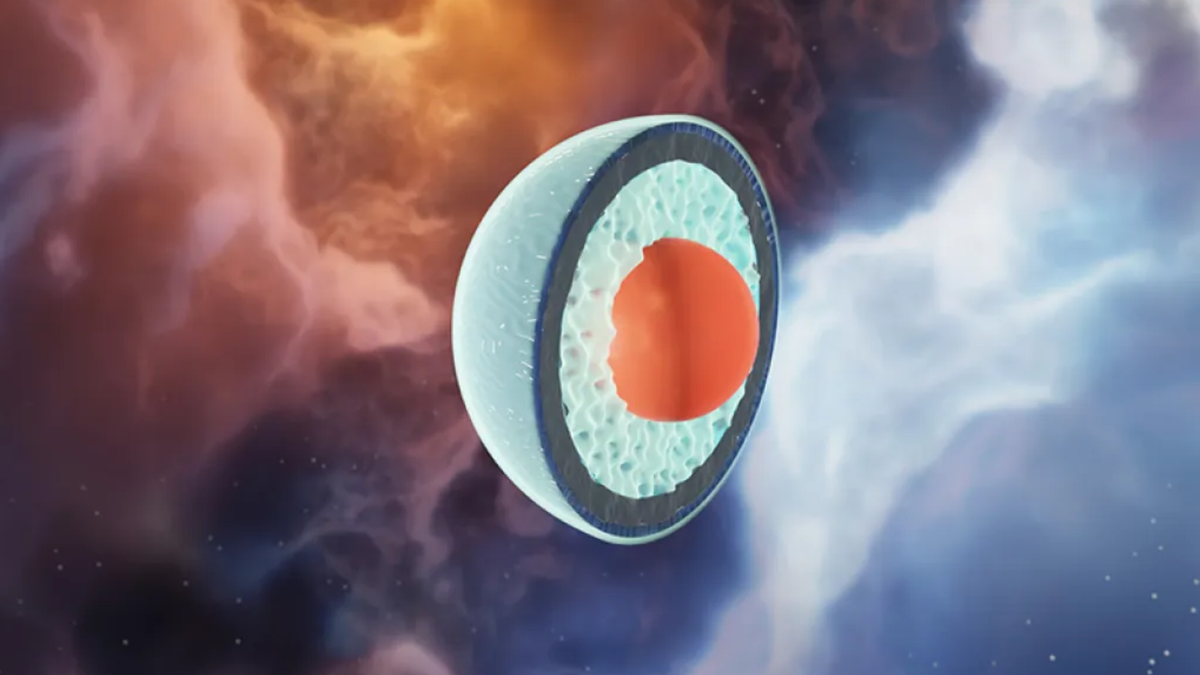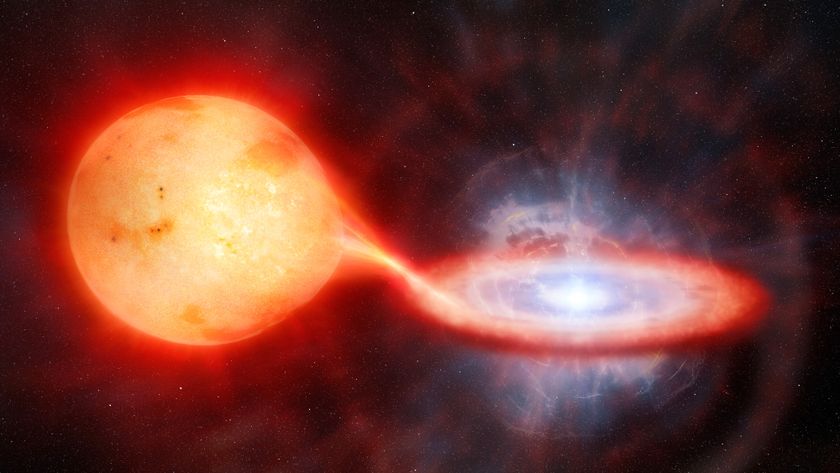The inside of a dead star might look like a gigantic atomic nucleus
"It is fascinating to concretely see how each new neutron-star observation enables us to deduce the properties of neutron-star matter with increasing precision."

Scientists may be closer than ever to cracking the mystery of what lies deep beneath the surface of dead, ultradense stars called neutron stars.
A new supercomputer analysis of neutron stars has revealed that there's between an 80% and 90% chance that these bodies have cores packed with free quarks, which are fundamental, subatomic particles usually only found bound together in other particles like protons and neutrons.
Protons and neutrons themselves come together to form the nuclei of atoms, around which electrons reside. But according to the team, if neutron star cores are indeed full of free quarks, they'd be composed of an exotic form of matter known as "cold quark matter." And in cold quark matter, individual protons and neutrons cannot exist. So, atoms cannot exist. Only the quarks.
If true, this would make neutron stars akin to incredibly enormous atomic nuclei.
"It is fascinating to concretely see how each new neutron-star observation enables us to deduce the properties of neutron-star matter with increasing precision," research lead author Joonas Nättilä, who is about to take over as associate professor at the University of Helsinki, said in a statement.
Related: Gold mine of kilonova explosions forged by neutron stars crashing together
Neutrons stars are born when stars with masses between 10 and 20 times that of the sun run out of the fuel necessary for intrinsic nuclear fusion occurring in their cores. This results in the cessation of the outward energy that, for millions or even billions of years, has held the star stable against the inward pressure of its own gravity.
Get the Space.com Newsletter
Breaking space news, the latest updates on rocket launches, skywatching events and more!
With gravity the victor in this cosmic tug of war, a star's core begins to collapse. As this happens, the outer material of the star, where nuclear fusion is still taking place, gets blown away in a massive supernova explosion.
This leaves the stellar core with a mass between one and two times that of the sun condensed down to a width of only around 12 miles (20 kilometers).
This massive reduction in the size of what is now a neutron star creates matter that is so dense a mere sugar cube-sized block of it would weigh around 1 billion tons if brought to Earth. That's a sugar cube that weighs as much as 3,000 Empire State Buildings.
So now, the question is, what is this incredibly exotic matter, probably found nowhere else in the universe, made of? And, more generally, can the conditions at the densest regions of these dead stars really create an entirely new phase of matter called cold quark matter void of protons and neutrons?
Scientists can't visit neutron stars to get a sample of this material; even the closest neutron stars are around 400 light-years away, so the next best thing is to simulate the conditions beneath the stars' surfaces using a powerful combination of actual astronomical data and supercomputers.
This new research used a type of statistical deduction called Bayesian inference that calculates the likelihood of different model parameters by making direct comparisons with observational data.
This allowed the team to determine the boundaries for neutron star matter, leading the crew to conclude the presence of cold quark matter to a high degree of probability. The mechanism also suggested a state of matter exists in neutron stars that is "non-nuclear," in which quarks are allowed to exist "deconfined" in protons, neutrons and other particles.
"Their constituent quarks and gluons are instead liberated from their typical color confinement and are allowed to move almost freely," Aleksi Vuorinen, a professor of theoretical physics at the University of Helsinki, said in the statement.
The team's supercomputer simulations also suggest a below 20% probability that matter within neutron stars experiences a rapid state change from nuclear matter to "quark matter," almost like water changing to ice. Such a quick change in matter could destabilize neutron stars in a way that could make even a tiny quark matter collapse to birth a black hole.
The research also offered that the existence of quark-matter cores could be fully confirmed in the future with some further analysis.
The key to this would be to determine the strength of the phase transition from nuclear matter to quark matter, something that could be possible when gravitational wave detectors become sensitive enough to "hear" tiny ripples in spacetime stemming from the last moment before two neutron stars orbiting one another collide.
Nonetheless, even with improved observational data, better models of neutron star cores will still require a vast amount of computational power and time.
"We had to use millions of CPU hours of supercomputer time to be able to compare our theoretical predictions to observations and to constrain the likelihood of quark-matter cores," Joonas Hirvonen, team member and a graduate student at the University of Helsinki said in the statement.
The team's research was published in December in the journal Nature Communications.
Join our Space Forums to keep talking space on the latest missions, night sky and more! And if you have a news tip, correction or comment, let us know at: community@space.com.

Robert Lea is a science journalist in the U.K. whose articles have been published in Physics World, New Scientist, Astronomy Magazine, All About Space, Newsweek and ZME Science. He also writes about science communication for Elsevier and the European Journal of Physics. Rob holds a bachelor of science degree in physics and astronomy from the U.K.’s Open University. Follow him on Twitter @sciencef1rst.











